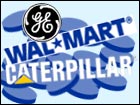
Shoebox Investor
What is a shoebox investor? An investor who generally pays himself first. The idea is that any money you can store in a shoebox or piggy bank, should be invested in the market. It is not how much you invest, it is the time value of money you should focus on. The earlier you put the money in the market, the longer you keep it in, the higher the chances of reaping the benefits of accumulating dividends. The reinvested dividends will buy you more shares.
Pay yourself first
Subscribe to:
Post Comments (Atom)





No comments:
Post a Comment